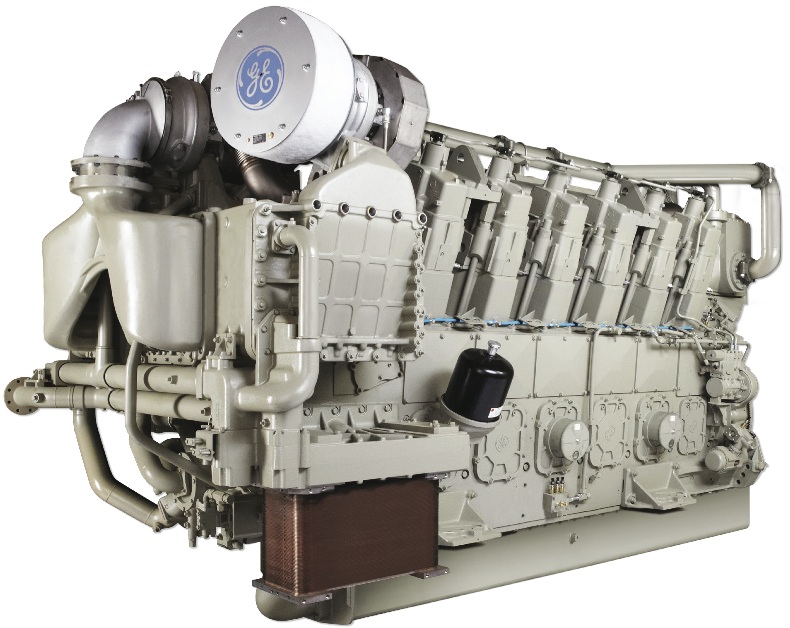GE unveils Tier III compliant engines
Though not designed for yachts, the medium-speed 8L250 and 12/16V250 power plants mean GE are first to market with non-SCR engines…
“The technology we developed reduces NOx and other emissions by more than 70 per cent and enables in-engine compliance with upcoming regulations,” explained Rob Van Solingen, product manager at GE Marine. “We have achieved an improved efficiency with this engine. We have higher output and power and fuel consumption has stayed neutral as opposed to our current IMO Tier II engines.”
“These new engines use a combination of combustion engineering, fuel systems, two-stage turbo-charging, controls and exhaust-gas recirculation,” Van Solingen said. Last week, GE announced that the 12V250 engine passed emissions testing for EPA Tier 4i and IMO Tier III.
These medium-speed GE engines are designed to be workhorse engines; they are heavier, more robust and run at lower speeds than the typical superyacht engines—about 900rpm. They have lower fuel consumption and can run longer between maintenance overhauls, but they’re also heavier and have a higher upfront cost.
“The key thing for yacht shipyards to consider is that with these engines you won’t need to have urea on board, so you won’t need the tanks or dosing systems or the catalysts,” Van Solingne said.
MTU, Caterpillar and other major engine manufacturers which are dominant in the superyacht sector are major players in the commercial and offshore markets which GE also serves. The announcement of a Tier III compliant engine marks a possible new high-water mark for marine diesel innovation, and if proven successful in those markets, would indicate that GE is the environmental engine-maker to watch in the years to come.
“This is big stuff,” comments Richard Franklin of GO2 Global Yachting, who monitors green technology for the superyacht sector. “It may be just a matter of time before the other big engine manufacturers achieve similar results. In which case, yards designing engine rooms for yachts with SCR systems may be aiming too large.”
Though the advantages that GE gained on their medium speed engines will be harder to achieve on high-speed engines, this latest development suggests there may be a way forward for the superyacht industry to consider that does not require the installation of an SCR system. By the time the Tier III limits are likely to impact the industry, a few years ahead of its likely 2021 implementation, engine manufacturers and exhaust systems specialists may have achieved the desired results within the existing engine room configurations.
Innovation in emission controls will be top of the agenda at the forthcoming Superyacht Management Meeting: Environment & MARPOL, taking place on Tuesday 25 June in Barcelona.
Details on the conference programme and panelists to be announced soon. The cost to attend this management meeting, including lunch and dinner is available for just €400.00. Click here to register your attendance, or call
+44 (0) 20 7801 1014 to register over the phone with Suzie. suzie@thesuperyachtgroup.com
Profile links
NEW: Sign up for SuperyachtNewsweek!
Get the latest weekly news, in-depth reports, intelligence, and strategic insights, delivered directly from The Superyacht Group's editors and market analysts.
Stay at the forefront of the superyacht industry with SuperyachtNewsweek
Click here to become part of The Superyacht Group community, and join us in our mission to make this industry accessible to all, and prosperous for the long-term. We are offering access to the superyacht industry’s most comprehensive and longstanding archive of business-critical information, as well as a comprehensive, real-time superyacht fleet database, for just £10 per month, because we are One Industry with One Mission. Sign up here.
NEW: Sign up for
SuperyachtNewsweek!
Get the latest weekly news, in-depth reports, intelligence, and strategic insights, delivered directly from The Superyacht Group's editors and market analysts.
Stay at the forefront of the superyacht industry with SuperyachtNewsweek




